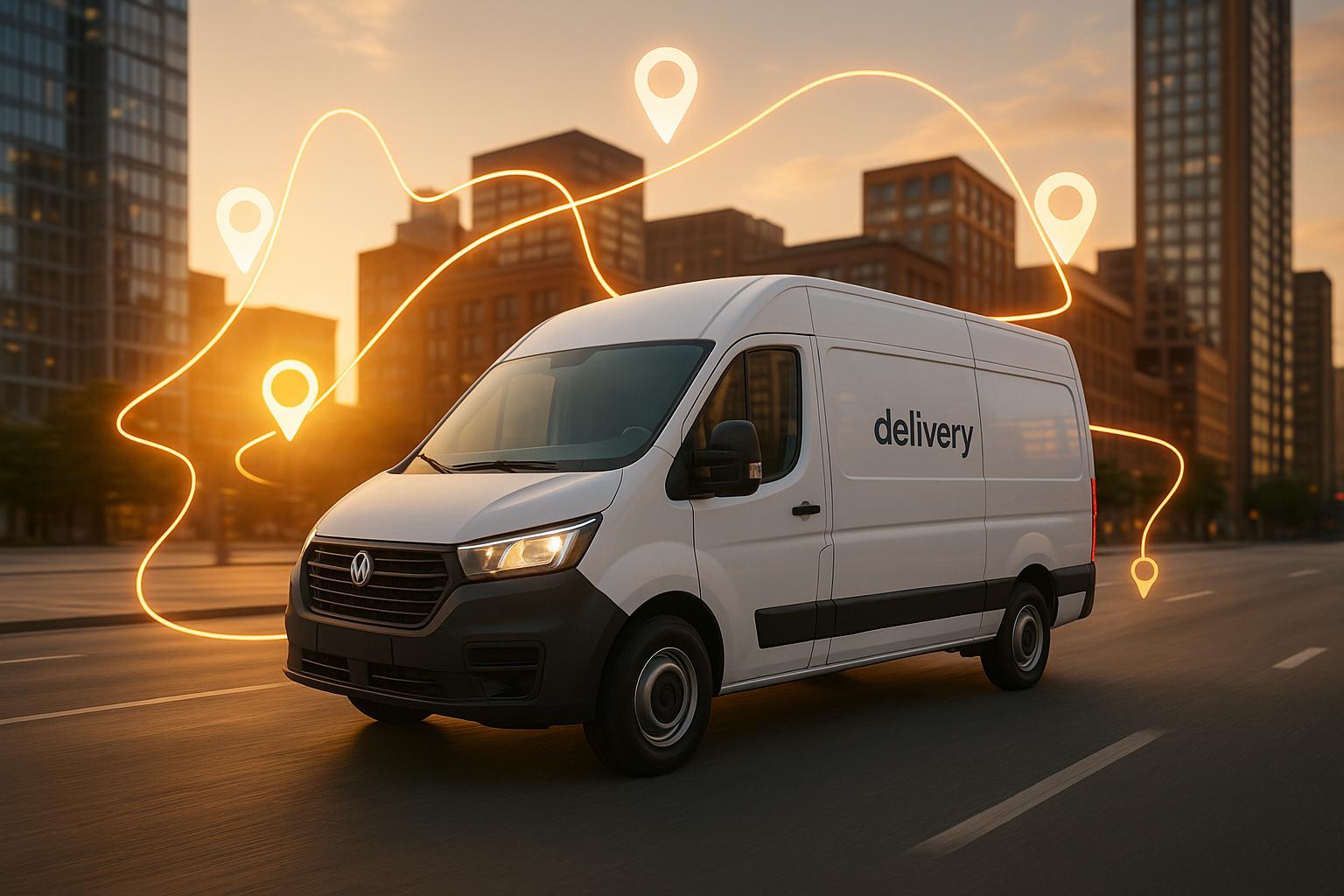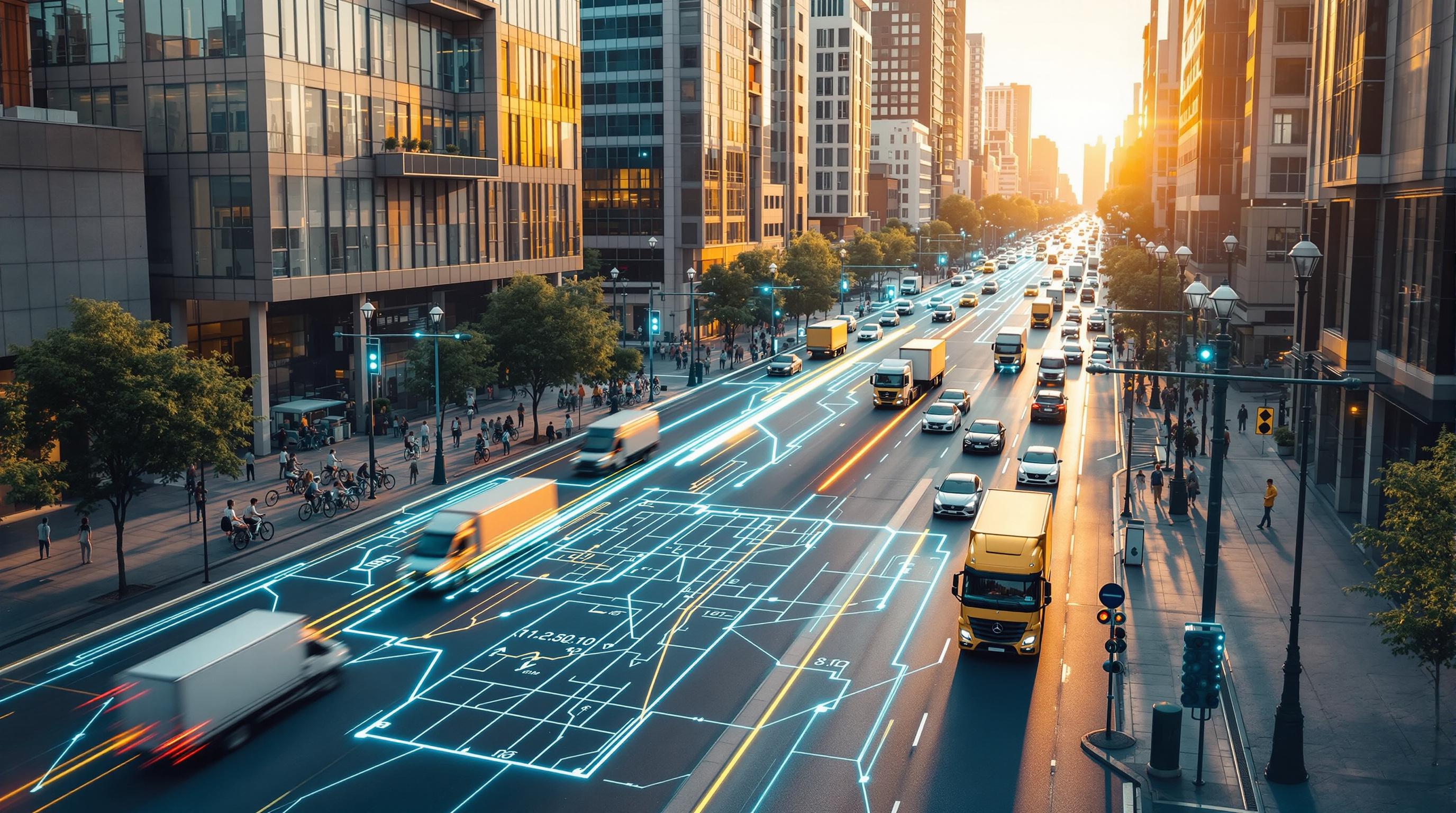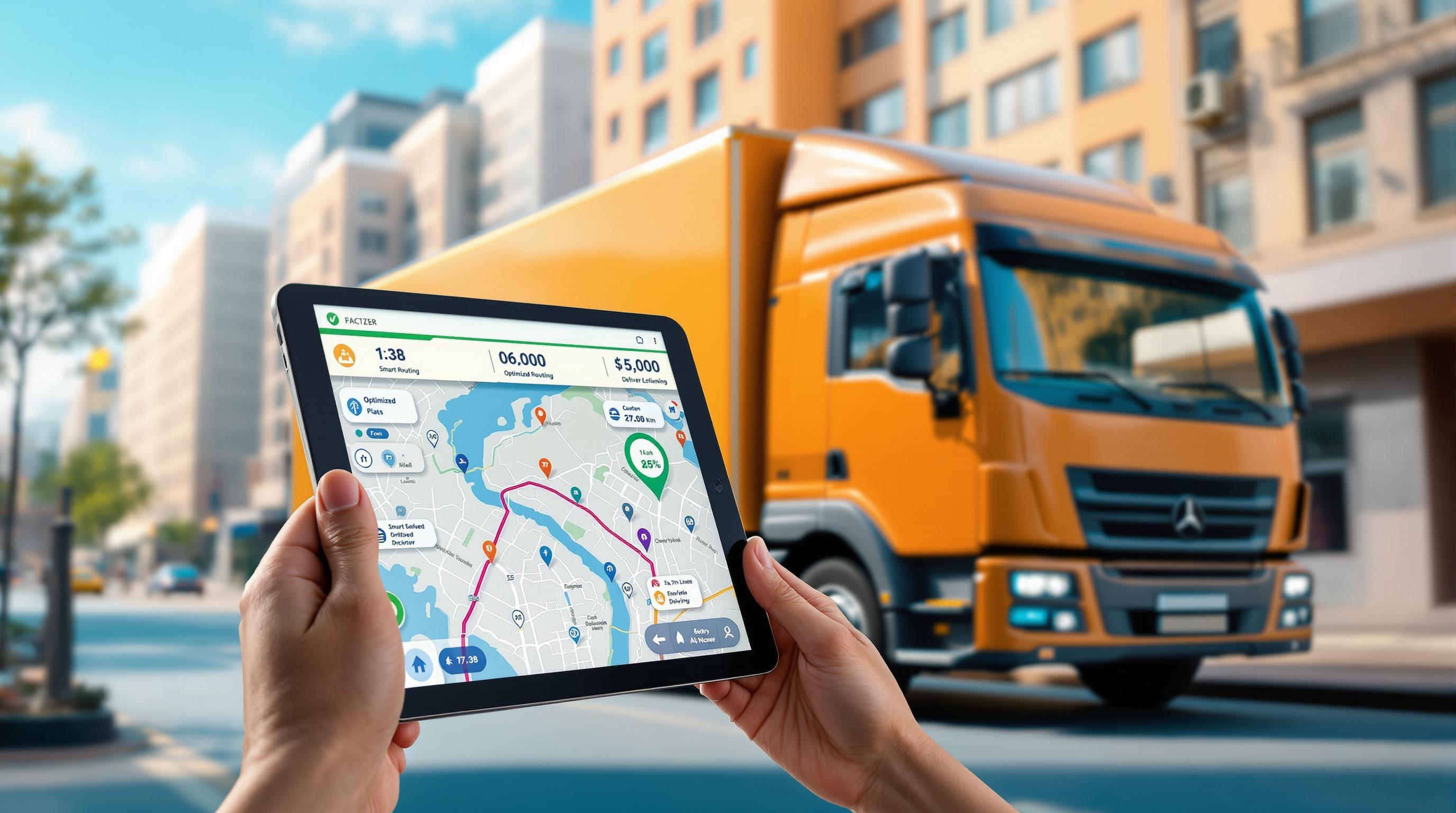Want to save 2 hours daily on travel? AI-powered route planning tools can help. They combine real-time traffic, weather updates, and historical data to create efficient routes for professionals and businesses. Here's how:
- Use AI Tools: Apps like Routemize adjust routes dynamically based on traffic, weather, and past data.
- Predict Traffic: Tools like HERE Real-Time Traffic forecast delays before they happen.
- Sync with Your Calendar: Automate scheduling and route planning for seamless coordination.
- Group Stops: AI clusters nearby stops to minimize unnecessary travel.
- Centralized Tracking: Manage all routes using one platform for better efficiency.
Quick Comparison of AI Route Tools
| Tool | Key Features | Best For |
|---|---|---|
| Routemize | Real-time traffic updates, predictive analytics | Multi-stop planning |
| HERE Traffic | Lane-specific tracking, live updates | Urban deliveries |
| Nextbillion.ai | Multi-vehicle routing, time window management | Logistics optimization |
Optimize your Delivery Route in 4 Steps
1. Use AI Route Planning Tools
AI route planning tools have changed the way we approach daily travel. Unlike standard navigation apps, these tools combine live traffic updates, weather conditions, and past travel data to create smarter, more efficient routes.
How Routemize Saves Time
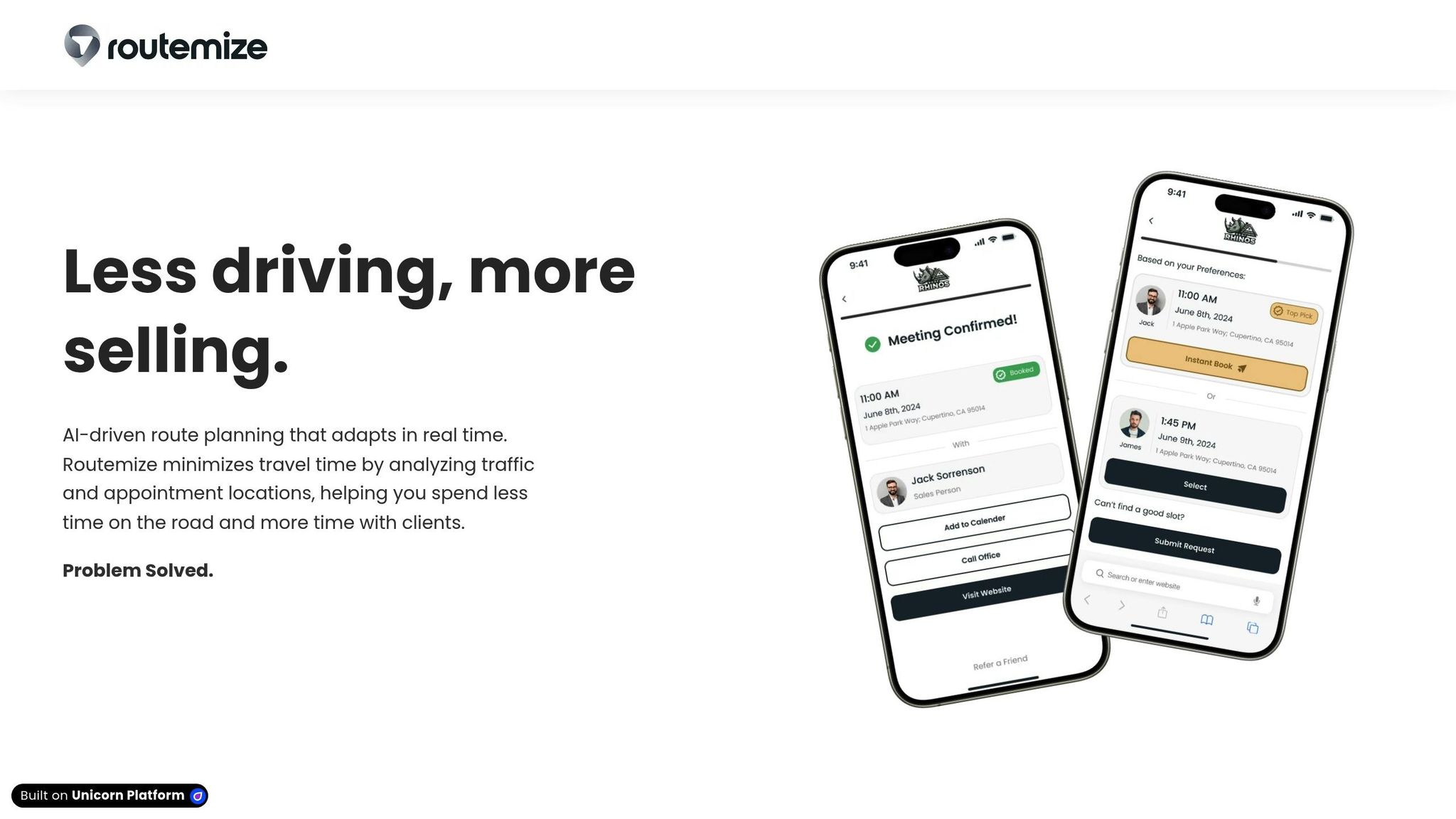
Routemize’s AI-driven platform includes several features designed to shave hours off your daily travel:
- Real-time Traffic Updates: Continuously adjusts routes to avoid sudden delays caused by accidents or congestion.
- Predictive Analytics: Analyzes past data to anticipate traffic jams before they happen.
- Weather-Based Adjustments: Modifies routes to account for bad weather that could slow you down.
- Dynamic Rerouting: Instantly suggests new routes when traffic conditions change.
Why AI Beats Standard Maps
AI routing tools go beyond what basic maps offer by:
- Analyzing Multiple Factors: Simultaneously considering traffic, weather, and road conditions to find the best route.
- Learning From History: Improving accuracy over time by studying past travel patterns.
- Customizing Routes: Tailoring directions to match individual driving habits and preferences.
According to a study by Google, AI-powered navigation can cut wrong turns by up to 50% compared to traditional methods. In busy cities, these tools can save 12-18 minutes per stop by avoiding common delays.
These advanced features set the stage for the next strategy: predictive traffic planning.
2. Plan Routes Using Traffic Forecasts
Thanks to AI's predictive capabilities, traffic forecasting can help you avoid delays before they even happen. These systems analyze past patterns and live data to predict potential slowdowns and keep you moving efficiently.
How Traffic Prediction Works
Modern traffic prediction systems rely on multiple data sources to create accurate forecasts:
- Historical Data: Information about past traffic trends, peak hours, and seasonal variations.
- Real-Time Updates: Data from GPS devices, traffic cameras, and road sensors provides live insights.
- External Influences: Factors like weather, local events, and construction activity are also considered.
By combining these inputs, traffic prediction tools can save significant time. For instance, HERE Real-Time Traffic updates routes minute-by-minute using live speed data and incident reports. With 99.9% uptime, it helps logistics teams cut down delays by 8-12 minutes per urban delivery.
Comparing Top AI Traffic Tools
Different tools offer unique features to improve route planning and optimization.
HERE Real-Time Traffic offers:
- Lane-specific congestion tracking.
- Detection of reversible lanes.
- A Traffic Safety Warning system.
On the other hand, Nextbillion.ai's Route Optimization API provides:
- Multi-vehicle routing.
- Time window management.
- Real-time capacity adjustments.
For businesses, integrating these tools into scheduling software can make a real difference. For example, Routemize uses AI traffic forecasts to adjust routes automatically throughout the day as conditions change.
When choosing a tool, prioritize those that integrate seamlessly with your scheduling systems, provide frequent updates, and cover your service areas effectively. These features ensure smoother operations and fewer delays.
3. Connect Calendar with Route Planning
Traffic forecasts help minimize delays, but combining calendar data with route planning takes it to the next level. By syncing schedules with routes, you can automate the process and eliminate the hassle of manual coordination. This builds on AI's predictive tools to streamline operations even further.
How Service Companies Save Time
Take the example of a home healthcare provider in Chicago. They revamped their operations by integrating calendar data with route planning. Their AI-driven system automatically matched appointments with the best travel windows.
"After implementing the integrated system, we saw a 27% reduction in travel time across our nursing staff. This allowed each nurse to serve 3 additional patients per day while maintaining a 95% on-time arrival rate - up from our previous 76%. The improved punctuality led to a 22% increase in patient satisfaction scores."
The system cut down on unnecessary backtracking, enabling nurses to see more patients without sacrificing quality or punctuality.
Auto-Scheduling Routes
Modern route planning tools use machine learning to optimize schedules on the fly. They group nearby stops and adapt to real-time changes, ensuring maximum efficiency.
Field service companies using these advanced systems report completing 20% more jobs per day. When choosing a solution, look for features like calendar syncing, mobile access, and analytics. These can help you save time and stay flexible as schedules evolve.
sbb-itb-7020db0
4. Group Nearby Stops Together
AI-powered stop grouping takes the guesswork out of planning routes by organizing stops in the most efficient order. This approach cuts down on unnecessary travel and shortens driving distances, all thanks to AI's ability to quickly analyze complex data.
AI vs. Manual Stop Grouping
Traditional methods rely on basic geographical zones and manual decision-making, which often results in subpar routes. AI-driven systems, on the other hand, handle thousands of stops and variables in real time, creating far more efficient plans.
An MIT study found that AI-powered clustering reduced total travel time by 18% compared to manual zone-based planning in urban delivery scenarios. This improvement plays a big role in achieving the 2-hour daily time savings highlighted earlier.
Here’s a quick comparison:
| Feature | AI Clustering | Manual Zoning |
|---|---|---|
| Processing Capacity | Handles thousands of stops at once | Limited by human capability |
| Precision | Accounts for exact distances and times | Relies on rough geographical zones |
| Customization | Easily adjusts to business rules | Limited flexibility |
Time Savings for Drivers
For drivers, smarter stop grouping means faster routes and fewer headaches. A leading e-commerce company saw a 15% drop in delivery times after adopting AI-driven stop clustering.
"After implementing AI-powered stop clustering, our HVAC repair company decreased technician travel time by 22%".
This approach considers multiple factors to ensure maximum efficiency without compromising service quality. Some of the most important considerations include:
- Delivery or service time windows
- Vehicle capacity limits
- Time spent at each stop
- Driver skills and specializations
5. Use One System to Track All Routes
Managing routes effectively requires more than just grouping stops - it demands a unified system to oversee the entire process. Using a single platform for route management not only reduces administrative headaches but also boosts delivery performance. In fact, centralized systems have been shown to improve on-time deliveries by 25%.
RouteQ vs. Routemize Features
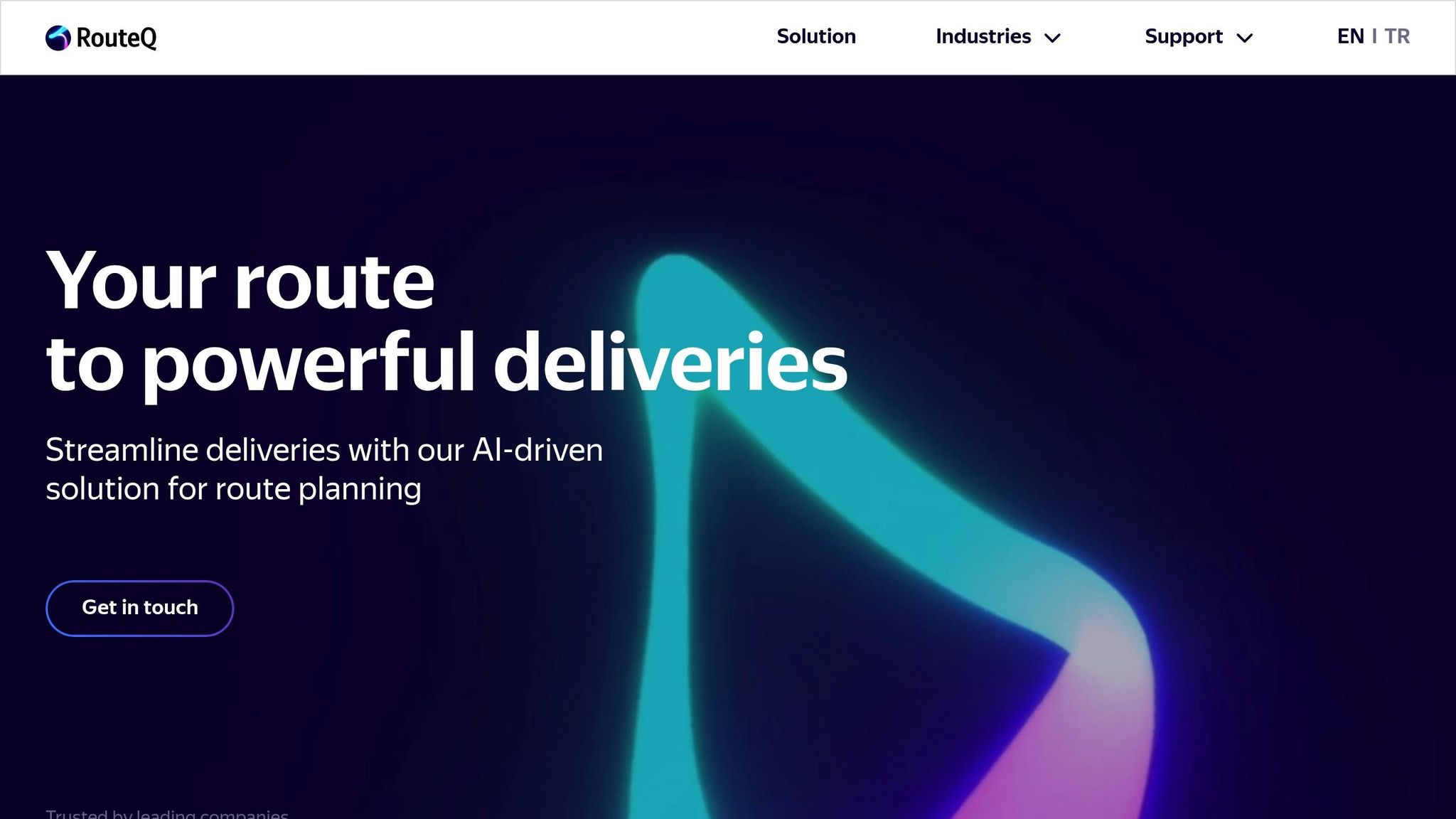
RouteQ and Routemize cater to different business needs with their unique features:
| Feature | RouteQ | Routemize |
|---|---|---|
| Route Optimization | Real-time traffic adjustments | AI-driven route planning |
| Analytics | Tracks driver performance | Customizable dashboards |
| Customer Updates | Geofencing alerts | CRM-integrated notifications |
| Mobile Support | Detailed driver app | Simplified user interface |
RouteQ shines when handling complex logistics with its advanced analytics, while Routemize is ideal for service businesses needing straightforward, multi-stop planning.
Why a Centralized Dashboard Matters
Peapod Digital Labs implemented a centralized system for their fleet of 2,000 vehicles, leading to a 15% reduction in miles driven and a 22% increase in on-time deliveries - all within just 90 days.
This kind of system complements AI-based route grouping and offers several advantages:
-
Streamlined Operations
Eliminates duplicate tasks, cutting administrative work by 20%. -
Improved Communication
Provides real-time updates, ensuring accurate ETAs for both drivers and customers. -
Informed Decision-Making
Consolidates data into one place, enabling smarter, proactive optimizations.
"After consolidating our route management into a single platform, our dispatch team's workload decreased by 30%", said Mike Johnson, Operations Director at Peapod Digital Labs.
When selecting a platform, prioritize options that integrate seamlessly with your current systems. Look for features like real-time GPS tracking, automated dispatching, and customer notification tools.
Conclusion: Save Time with AI Route Planning
Using these five AI-driven strategies - like predictive traffic tools and centralized tracking - businesses can save hours daily while improving key performance metrics.
Take XYZ Logistics, for example. They cut 2.4 hours per driver each day by applying these methods (see Tip #1). Within just three months, they saw:
- 22% lower fuel costs
- 96% on-time deliveries (up from 82%)
- 35% reduction in driver overtime
- 18% boost in customer satisfaction scores
These saved hours open up opportunities to:
- Handle more deliveries
- Focus on staff training
- Provide better customer service
Want to get started? Follow these three steps to unlock time savings:
- Step 1: Review your current workflows
- Step 2: Experiment with AI tools like Routemize
- Step 3: Run pilot programs to test effectiveness
Regularly updating your systems and fine-tuning your AI tools will help you get the most out of your route optimization efforts.
FAQs
What is the best app to plan a route?
The right route planning app depends on what you need. Here's a quick comparison of some top options:
| App | Best For | Key Features |
|---|---|---|
| Upper | Businesses & Teams | AI routing, delivery confirmation, auto-updates |
| DynoRoute | Solo Drivers | Easy-to-use and ideal for single-driver routes |
| MapQuest | Small Delivery Areas | Free option with a 26-stop limit |
| Waze | Daily Commutes | Real-time, crowd-sourced traffic updates |
For businesses handling complex deliveries, Upper is a strong choice with features like:
- AI-driven route optimization
- Delivery confirmation tools
- Automatic updates for customers
Solo drivers often prefer DynoRoute for its simplicity and focus on single-driver efficiency.
If you're looking for a free option, MapQuest offers reliable functionality, though it caps routes at 26 stops.
When deciding on a route planning app, think about:
- How many stops you make each day
- Features you absolutely need
- Your budget
- Whether the app integrates with your current tools
Advances in AI-based routing have made planning much faster and more effective. Many users report hitting their 2-hour daily efficiency goal with these tools.
